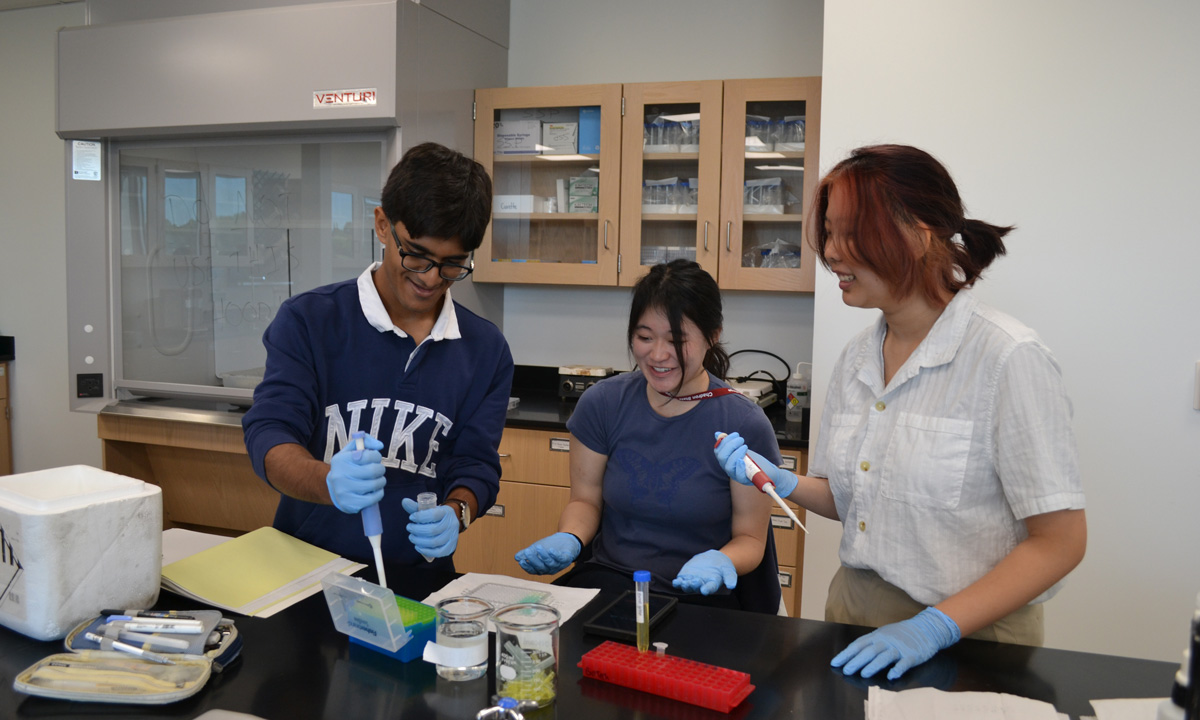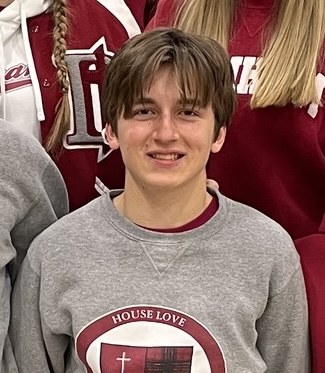
Science exhibitions and contests were a common part of Vinicia Kim’s life, as she was raised in Guam with a strong enthusiasm for science, technology, engineering, and mathematics. However, as she moved into high school, the U.S. territory island—situated approximately 1,500 miles east of the Philippines—soon felt too limited for Kim’s expanding ambitions.
Guam offers very few STEM opportunities,” Kim stated. “Even at the University of Guam, it’s so limited that we have almost no fundamental laboratory equipment, which other universities typically have.
Receive similar stories directly in your email inbox.Register for The 74 Newsletter
A 17-year-old student, upon hearing about a highly competitive U.S. summer science program, submitted her application. She had no idea that she would not only be accepted, but also travel to the small, rural town of Chadron, located in the sandhills of western Nebraska.
In June, Kim started the biochemistry program atSSP Internationala non-profit organization that has provided residential summer STEM research opportunities for teenagers since 1959. She and 35 other incoming senior students spent five weeks at Chadron State College, carrying out research alongside professors and graduate students to aid in preventing fungal infections of agricultural crops.
The institution is among 14 universities nationwide that accommodated 600 students this summer to work on research initiatives in areas such as astrophysics and cell biology. Chadron State, which enrolls approximately 2,000 students, became part of the organization’s partner list this year to enhance the biochemistry program, also offered at Purdue and Indiana universities.
Rachel Avard, a biology professor at Framingham State University in Massachusetts, collaborated with SSP International students at Purdue University in the previous year. This summer, she traveled to Chadron for the same purpose: to assist future scientists in developing essential STEM skills, as well as fostering personal development and readiness for higher education.
Many of them have never experienced not being ‘the best’ right from the moment they walked in,” she said. “We’re truly able to guide them through learning how to develop these skills and work as part of a team, how to cope with failure, and how to overcome all these challenges.
The three colleges within SSP International’s biochemistry program are focusing on thesame research project. Upon completion of the final session, students will have developed a molecule capable of inhibiting enzyme function and preventing fungal infections in crops. This is a project that SSP International students have been focusing on for several years, according to Avard. The organization is gathering the research findings from participants, which may potentially be utilized to develop a drug that safeguards crops in the future.
Fungal diseases are causing damage to crops, sometimes as high as 50% or 60% annually. Despite the use of numerous pesticides and fungicides, they are all very harmful,” she stated. “Therefore, the aim of this project is to create a medication that effectively targets fungi.
From Water Quality to Cancer, Here Are 6 STEM Students Tackling Practical Challenges
The schedule involves 60-hour workweeks within the college’s science and mathematics department. Each day consists of detailed classroom instruction and group conversations, after which students don lab gloves to perform experiments in the laboratory.
Each person is entitled to a one-hour break for rest or meals, but students frequently remain in the lab past sunset or during their personal time on weekends. Dinner is always dressed in a business casual style and offers chances for professional networking with guest speakers. Avard and other faculty members also organize field trips or host games in the evenings to encourage teamwork among the students.
The intensity of the summer science program came as a shock to many, including Kim.
I wasn’t aware it would be this intense. The first three days, I’d say, were the most challenging of my life—similar to exam time—but it makes me feel accomplished, and that’s truly what matters,” she said. “And good outcomes are going to emerge soon. Science is thrilling. You never know what will happen. So it keeps us fully engaged and motivated to give our best.
Researchers have discovered that strong academic training and involvement in STEM fields is akey influencethe likelihood of high school students pursuing a career in STEM. In a 2023study, 75% of Gen Z individuals expressed interest in STEM careers, but only 29% mentioned a STEM profession as their top career option.
A 2021 study from Purdue University regarding SSP International’s summer science program discovered that “participating in real research as a high school student has the potential to”promote motivation and retention in STEM.”
The idea isn’t simply about teaching science to certain students, but rather about providing them with a transformative experience during a crucial moment in their lives,” said Amy Belote, the organization’s vice president of program operations. “When they finish the summer science program, they’re preparing to begin their senior year of high school — considering their future and what they hope to achieve. We’re offering them practical experience before they start making all those decisions.
Learning Through Careers: Inspiring Students with Practical Abilities
The program only admits roughly 15% of those who apply, Belote mentioned, and aims to maintain an equal distribution of males and females in each group. In Chadron, the group includes 18 girls and 18 boys.
The program carries a significant cost of $9,800. Almost half of the participants from last year received financial assistance, while roughly a third attended at no cost. In addition, students can get a monthly allowance and a $3,000 stipend to compensate for the income they would have made during the summer if they had stayed home.
Avard mentioned that these aspects of the program enable students from diverse backgrounds to have an experience that can alter their life path. Observing each student’s individual development—being isolated on a college campus with a small group of people for five weeks, working extended hours—is her most cherished aspect.
On day one, they don’t make eye contact. They’re very quiet. Everyone is quite uncertain,” she mentioned. “They’ve never really been by themselves or without a parent’s supervision throughout the day. So the progress we observe in just the first few weeks is amazing.

This summer marked Aiden Fee’s first visit to the Midwest. The 16-year-old from Baton Rouge, Louisiana, shared that he developed an appreciation for the wide-open spaces and the welcoming locals in the area. He also grew more at ease when interacting with new people in different environments.
I’ve gained a lot more understanding about working together and seeking help,” Fee stated. “Many of the students here are among the top performers at their respective schools. When you have so many individuals like that, it’s about not being the leader, but instead trusting others.
Kim mentioned she is excited about utilizing the organization’s alumni network, which offers group and individual mentoring for recent participants as they move from high school to college.
These past weeks have been the most intense and difficult period of my life. However, it has been very enlightening. I have connected with many individuals from various backgrounds, and I am really looking forward to the future, as we all hope to become some kind of scientist,” she stated. “So I can’t wait to see where this program takes us.







